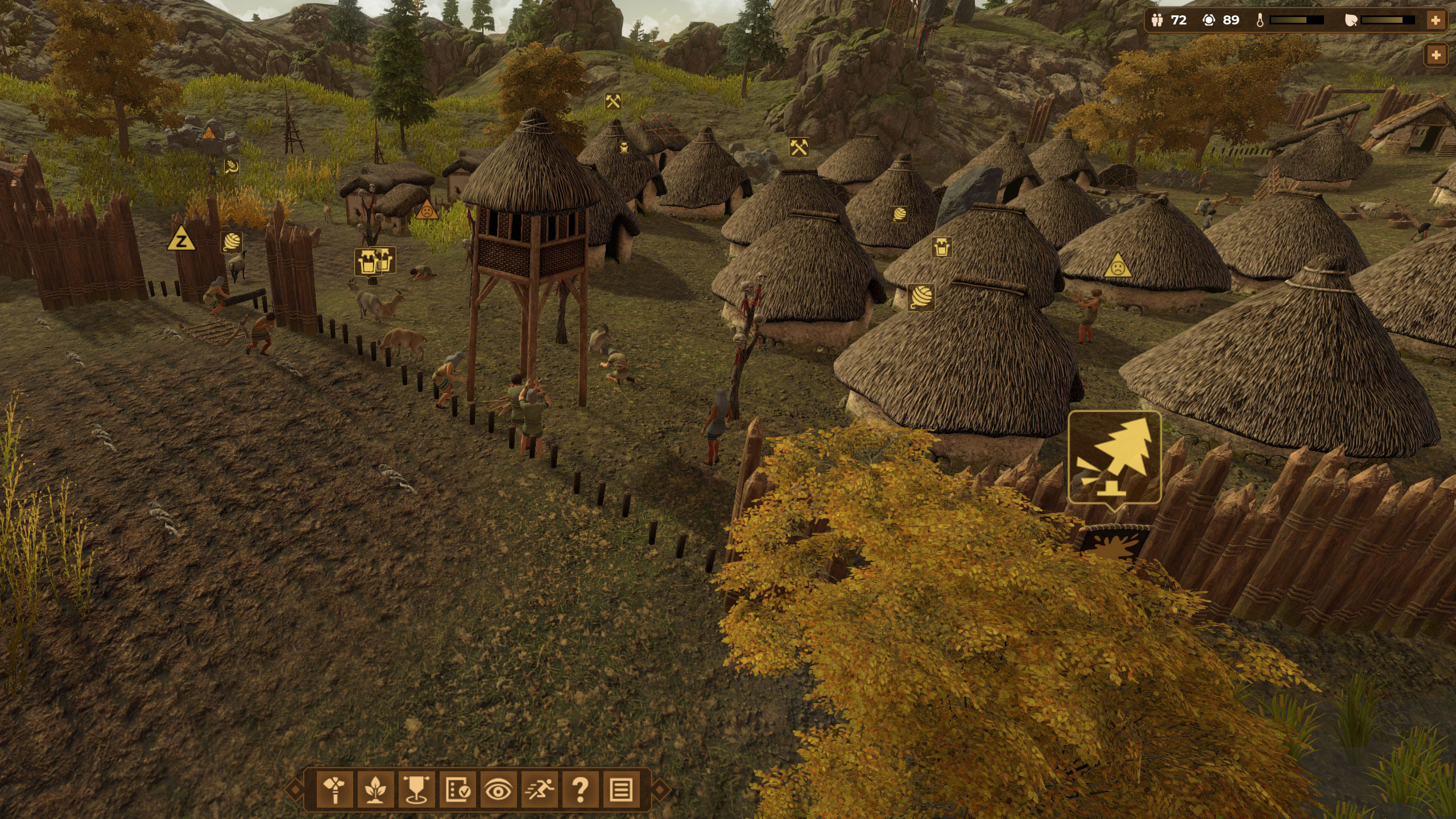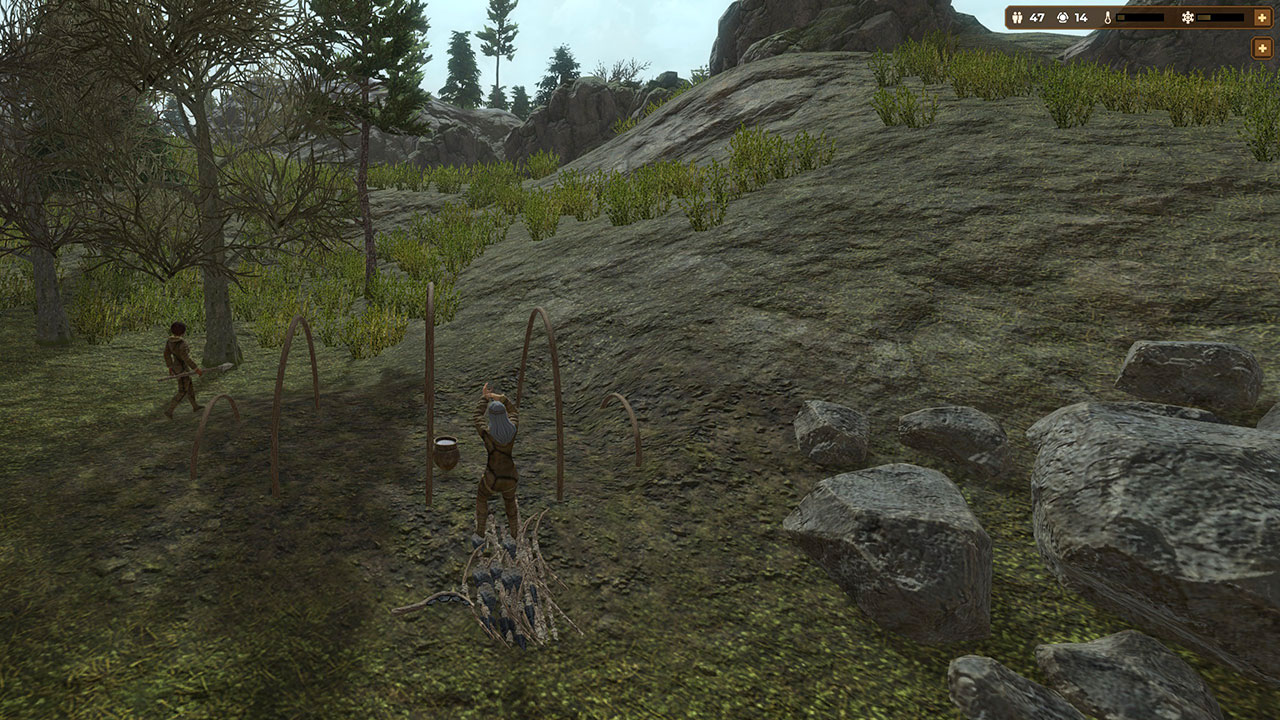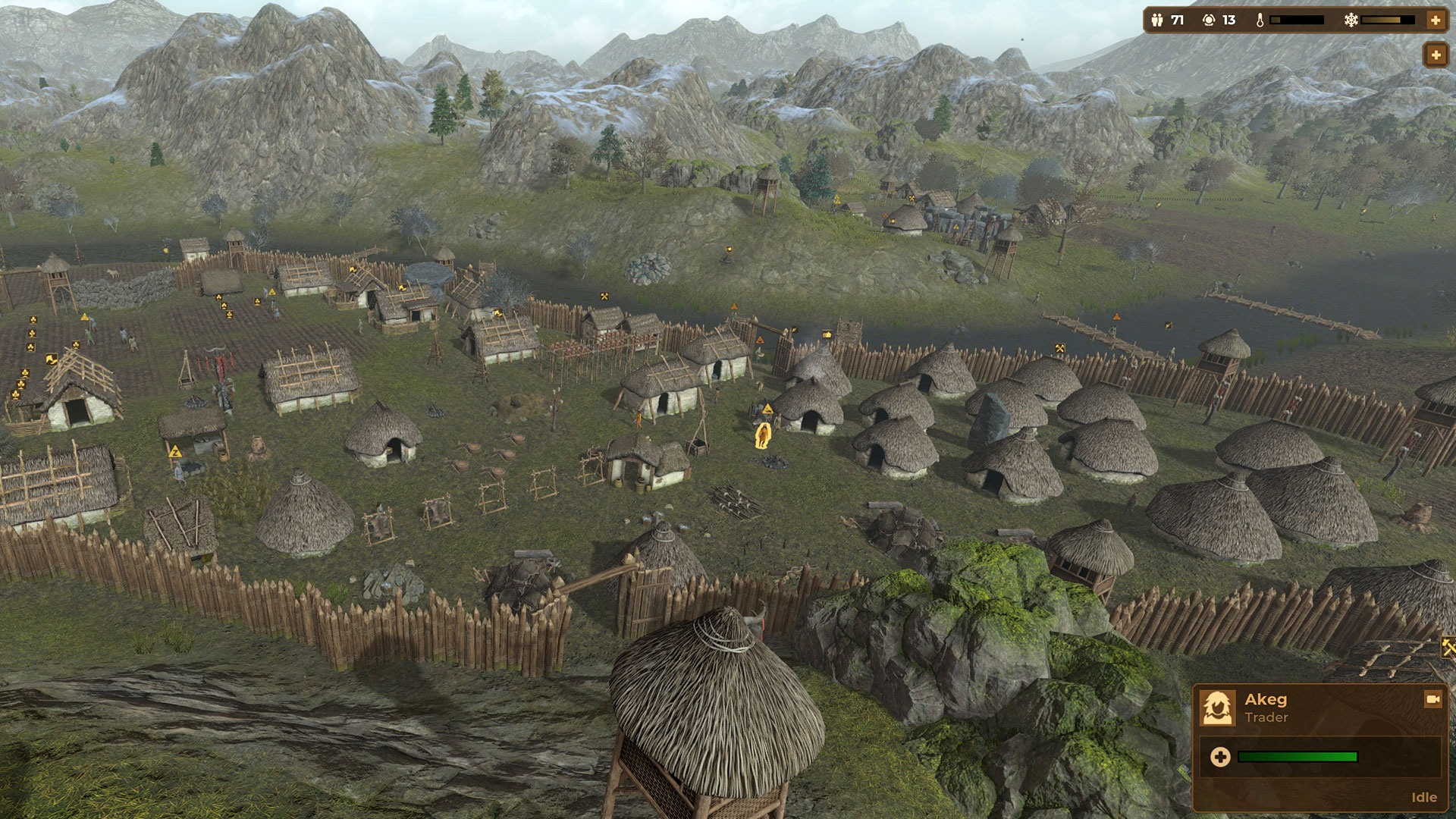Wot I Think: Dawn Of Man
We built this city on wattle and daub
My lowest ebb in out-of-nowhere city-builder hit Dawn of Man was not when raiders slaughtered 18 of my people while they were calmly picking pears, or when three of my guys collapsed in the snow because I'd ordered them to spend the winter hauling a bus-sized rock across a mountain range (I wanted to build a henge, you see).
No, it was the Great Goat Plague. 43 of the buggers succumbed to some fatal goat lurgy, contracted because my braying friends knocked hooves faster than I could possibly build stables to house all the resultant goatlings. Because they consumed hay faster than a half-dozen grain fields could possibly re-grow. The goat-horde was thus shivering and starving when the frosts came, an open door to some terrible infection, centuries before vets were invented.
There was no cure for the goatpocalypse. It ravaged my prehistoric tribe's trouser-nibbling livestock. Frankly, it was a relief.
Like any good city-builder, drama in ancient humans management-strategy game Dawn Of Man centres around overreaching. And what makes Dawn Of Man, which is ostensibly built from very familiar parts, so compelling is that overreaching plays out in unexpected, far-reaching ways.
Dawn Of Man could so easily have been purely brutal. It would fit the sticks and stones theme, and I swear I've played a dozen things with the same perspective and same stark palette, which merrily stamped me into the ground for daring to not yet understand every nuance, for having the temerity to experiment.
However, and I think to its credit, DOM has a different agenda. It has its tragedies, it has its goatpocalypses, and you can play it at thoroughly merciless difficulty settings if you so desire, but really the lesson here is do the work and you'll survive - even thrive. Even bounce back from a goatpocalypse.
In that case, disaster arose because I was so excited about a newly-acquired tech unlock, which enabled my gaggle of settlers (who previously had been limited to picking berries or throwing stones at wolves) to now catch and then farm their own livestock. So I had my hunters stay their slings and instead lasso every ibex kid they could find, and mouflon and boar too. I bought more still from the irregularly-appearing trader, swapping bones and basic blades for baby boars. I overreached.
I didn’t realise the goats would breed. I’m so accustomed to strategy animals being static resources, not living things. I don’t believe I have ever played a city-builder with horny goats in it before.
I couldn’t build enough stables. I couldn’t plant enough grain fields. I couldn’t harvest enough hay. I couldn’t lure enough new people to my camp to lessen the exhausting, ever-growing workload. I couldn’t manually order goats slaughtered quickly enough to compensate for their relentless fucking.
There were soon more goats than people in my bone-and-stone settlement. People died, run off their feet, too busy to eat and to sleep, enslaved to the infinite goat army.
Until the goat-plague came, and there was peace in our time. And so much more hay to build roofs from.
A chain of events that felt unique to me, that felt like a game owning the particular challenges of its prehistoric theme, rather than going through well-established motions with an ancient skin. Dawn Of Man never lets go of the importance of resources, of making sure there’s enough to go around, of teaching me that a new innovation represents a profound change for these simple people.
It's been a good month for strategy-management games which zero in on a particular tone rather than try to go as big as possible. The bucolic Foundation was town-building as Sunday dinner, all lazily helping yourself to more, more, more with no pressure to do anything else. Now Dawn Of Man focuses unswervingly upon the rudiments of civilization, with even the concept of luxury yet to occur to any of its festering tribespeople. Their highest aspiration in life is to have a skull on a stick outside their front door (a door which is itself made from something's skin).
The work begins at picking up sticks with which to make flimsy fish-poking tools, and rises to the giddy heights of building stone walls and hammering hot iron into something pointy. In other words, it's the first few turns of Civilization, or the first half hour of an historical RTS, dragged under the microscope and enlarged into a full game. Taming that first ibex was a massive milestone; hunting a mammoth for the first time was the stuff of legend; my shivering ancient humans figuring out how to bend a stick into a bow or coat their skin-thin huts in thick mud felt like the whole world had changed.
Most nuts and bolts are perfectly familiar if you've ever played a Settlers or an Age of Empires, but it's this absolute focus on a particular era, and its particular challenges, that makes Dawn of Man all its own. Oh, the pride I felt when, hours later, I looked upon a scene that once was four tiny people miserably picking up fallen branches.
Now, it was a neat spread of fields, dozens of thatch-roofed huts, and eighty wool-clad folk living moderately comfortable lives. They hauled logs on horse-drawn carts, they roved easily across bridges that crossed a vast river they once had to swim across just to collect a bit of flint, and they relaxed around a stone circle built from towering megaliths that had been hand-dragged from miles away.
All of this had been built. Not simply placed and then automatically erected if there was enough gold in the bank – every stone, every branch, every bit of hide or bale of hay gathered and carried. Every inch of this place the result of my people’s hard labour.
Dawn Of Man absolutely achieves what it sets out to do, then, but not without a few stumbles. The interface isn’t much help when it comes to identifying exactly where and how something's gone awry, the attempts to balance automation with manual intervention can feel inelegant, and the shift to fending off irregular raiders in the later stages of the game feels like a tired default rather than an attempt to devise more interesting peril.
The maps are pleasingly enormous, but most of the great spread of mountains, lakes and forests ultimately purposeless, with no greater goal once you’ve built all there is to build. And its attempts to move the historical needle onwards, as stone age becomes bronze age becomes iron age, happen with just a shrug. The sudden extinction of the astounding ice age beasts I had once hunted, the mammoths, woolly rhinos and megaloceros, was a flat text statement, the whole world immediately rendered less delightful.
But what a journey it had been. That doesn’t feel like a statement that can often be said of a city-builder – a true sense that everything had changed, as opposed to being a straightforward march towards profit, during my time with it. Dawn Of Man’s great triumph is that, a dozen hours after I’d picked my first berry, forging my first iron sword felt like an immortal accomplishment.









